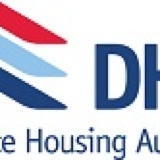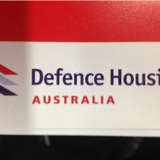Information
-
Client / Site
-
Contractor name - HMC - MITM
-
Conducted on
-
Prepared by
-
Location
1 Documentation
-
1.1 Does the worker have a copy of the Maintenance item?
-
1.2 Does the worker have a Construction induction card
-
Workers must have a Construction induction card and carry it at all times when on site. site to be made safe and work stopped. Garden maintenance is the only exemption. if this is the case tick NA
-
1.3 Has the worker undertaken a DHA Contractor induction
-
1.4 Has the worker conducted a pre-start risk assessment?
-
1.5 Does the worker have a copy of SWMS applicable to the job?
-
If the work is listed as High Risk Construction Work, the job must not continue until the relevant SWMS is brought to site. Workers are to make site safe and stop work.
-
1.6 Are the workers conducting the work in accordance with the SWMS?
-
You may need to come back to this question after completing the rest of the audit. If you believe the workers are not following the SWMS then you are obliged to stop work.
2 High risk construction work
-
2.1 Is the work conducted where a person could fall two metres or more?
-
2.1.1 Do the workers have a SWMS on site?
-
2.1.2 Is the work being carried out in accordance with the SWMS?
-
2.1.3 Are they exposed to an unprotected edge?
-
2.1.4 Is the control measure used on site as indicated in the SWMS?
-
2.1.5 Does the method to prevent a fall include the use of safety harnesses?
-
2.1.5.1 Ask the worker. What is the attachment point rated too
-
2.1.5.2 Ask the worker Is the safety harness set up in fall arrest or fall restraint
-
If the worker cannot answer you then they should not be using a safety harness. Stop the work as they have not demonstrated the have sufficient training.
-
2.1.5.3 What training has the worker received?
-
Workers using a safety harness system must have been provided with training on the selection, inspection and use of Safety harness systems.
-
2.1.5.4 If in fall arrest does the SWMS have an emergency rescue plan?
-
To rely on calling 000 is not a rescue plan. stop work.
-
2.1.6 Is a ladder used to access the work area?
-
2.1.6.1 Is the ladder secured to prevent movement?
-
2.1.6.2 Does the ladder extend one metre past the step off point?
-
2.1.6.3 Is the ladder rating "Industrial"?
-
2.1.6.4 Is the ladder used as per manufacturers instructions? i.e not a step ladder opened up to reach higher than designed.
-
2.2 On or near electrical installation
-
2.2.1 Do they have a copy of the SWMS on site
-
2.2.2 Ask do they have a Lock Out Tag Out (LOTO) procedure
-
2.2.3 Have they implemented the LOTO procedure on site?
-
Two ways to verify compliance Check the switch board for evidence of mechanical lock out.
Ask to see the workers LOTO kit. -
If there are any exposed wiring on circuits that are not isolated ask the contractor to rectify the situation immediately?
-
2.3 On or near pressurised gas (air conditioning – LPG – Natural gas)
-
2.3.1 Do they have a copy of the SWMS on site?
-
2.3.2 Have they minimised the risk of unintended release of gas by isolating and locking out the supply?
-
2.4 Mobile Plant
-
2.4.1 Does the Contractor have a SWMS for the work on site?
-
2.4.2 Does the plant look to be in good condition?
-
2.5 Possible disturbance of asbestos (any premises that were built before 31 Dec 2003)
-
2.5.1 Has the contractor checked the Asbestos register?
-
2.5.2 Is the work in an area that has been indicated as having asbestos?
-
2.5.2.1 Does the contractor have a SWMS for the work indicating controls to eliminate dust release?
-
2.5.2.2 Have the workers undertaken working with asbestos awareness training?
-
2.6 Does the work involve demolition or the temporary support of a structure?
-
2.6.1 Does the contractor have a SWMS?
-
2.7 Does the work involve a confined space?
-
Generally work in a roof space is not classed as in a confined space. but the risk from heat, electrical and falls from height
-
2.7.1 Do they have a SWMS for the work?
-
2.7.2 Do all those participating have a confined space entry card (including the observer)?
-
2.7.3 Is there a site / confined space specific risk assesment?
-
2.7.4 Have they completed an entry permit?
-
2.7.5 Do they have a rescue plan?
-
Calling 000 is not a rescue plan. work must be stopped if any of this criteria is not met.
-
2.8 Does the work involve the risk of drowning?
-
2.8.1 Do they have a SWMS for the task?
3 General site safety
3.1 Ladders other than those covered previously
-
3.1 Are ladders in use on the site?
-
3.1.1 Is the ladder rated industrial?
-
3.1.2 Is it in good condition (not damaged or missing parts)?
-
3.1.3 Can they maintain three points of contact with the ladder while undertaking the work?
-
Workers must maintain three points of contact with the ladder. If this is not possible then they have brought the wrong ladder and work will be stopped. For work requiring two hands a platform ladder or mobile scaffold should be used.
3.2 Power tools
-
3.2 Is the contractor using electric power tools on site?
-
3.2.1 Is there a tag on the tool and leads indicating they have been tested within the last 3 months?
-
3.2.2 Do the tools and leads look to be in good condition? (no cuts or electrical tape on leads)
-
3.2.3 Is the circuit used to supply the power tool protected by an RCD?
-
All power tools must be protected by an RCD device. . Where the fixed supply is not protected, a portable RCD must be used. All power tools must be tested by a compitent person every three months. This includes those used by cleaners.
3.3 PPE
-
3.3 Are workers required to wear PPE for the activity being undertaken?
-
3.3.1 Are workers using the correct PPE?<br> If not indicate the PPE you believe should be used
3.4 Chemicals
-
3.4 Are the workers using chemicals?
-
3.4.1 Are the containers appropriate for the storage of chemicals. (no drink bottles used)
-
3.4.2 Are all containers used, clearly identified?
-
3.4.3 Do the workers have a Safety Data Sheet for all Chemicals?
-
When using chemicals workers must have access to the Safety Data Sheets SDS. The chemicals must not be decanted into containers such as drink bottles. all containers must be clearly marked with the chemical details.
3.5 General house keeping
-
3.5.1 Is work being carried out in a way that minimises the risks to the Tenant
-
3.5.2 Is the work area and site kept free from debris?
-
3.5.3 Are offcuts and waste placed in an appropriate receptacle or where stacked up de-nailed?
3.6 First Aid
-
3.6.1 Does the contractor have access to first aid?
3.8 Emergency planing
-
3.7.1 Do they have an emergency plan?
-
3.7.2 Do they have a fire extinguisher that has been tested in the last six months
3.9 Supervision
-
3.8.1 Is there a supervisor on site?
-
3.8.2 Are there any Apprentices on site?
-
3.8.2.1 What year is the Apprentice / Apprentices?
- Year 1 - 2
- Year 3 - 4
-
3.8.3 Is the apprentice supervised?
-
3.8.2.3 In your opinion Is the Apprentice working safely?
-
If you believe the apprentice should be supervised; or
If you believe the Apprentice is working unsafely
You should stop work
4 Conclusion
-
4.1 Was work stopped due to a safety concern?
-
4.1.1 Why was the work stopped?
- SWMS not on site
- SWMS not followed
- SWMS did not address a risk
- Worker not inducted into SWMS
- Worker not DHA inducted
- PPE not used
- Poor supervision
- Unsupervised apprentice
-
4.1.2 If work has recommenced what actions were taken?
- Direction to stop ignored, work continued.
- Contractor produced SWMS
- Contractor started to follow the SWMS
- They addressed the safety issues
-
Are there any other safety concerns not covered by the audit? If yes please list
5 Corrective Actions
-
All items identified in this audit must be addressed by the contractor responsible. The contractor must use a risk based approach to address any issues. Where there is a need to implement a temporary or interim control until a hazard can be permanently addressed this must be documented. Written confirmation that the items identified have been addressed must be sent to the DHA representative within Seven days of receiving a copy of this report
DHA will require a written response to this audit outlining how all issues are to be addressed to prevent a re-occurrence. -
Enter any corrective actions that have been discussed on site
Sign Off
-
On Site representative
-
DHA Representative's sign off








